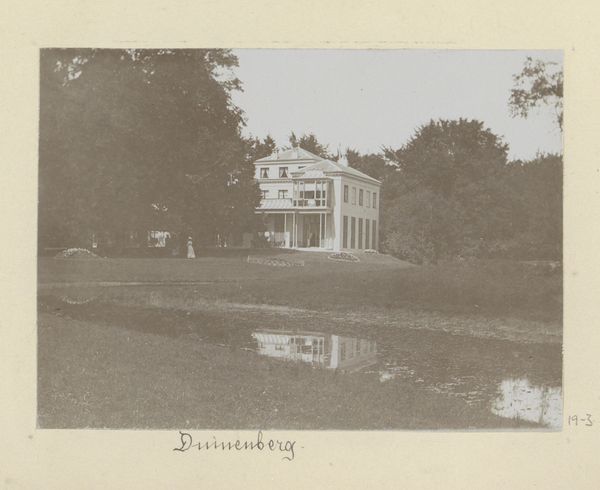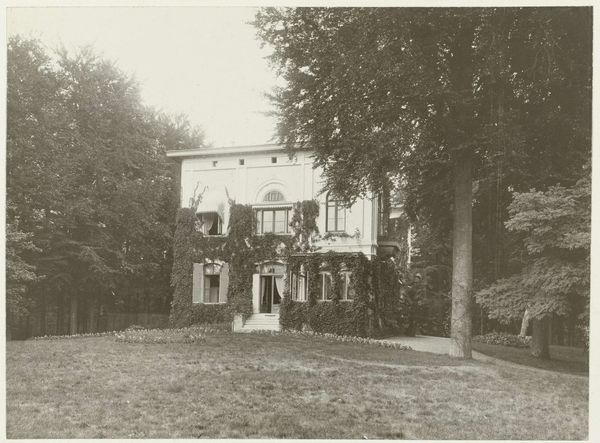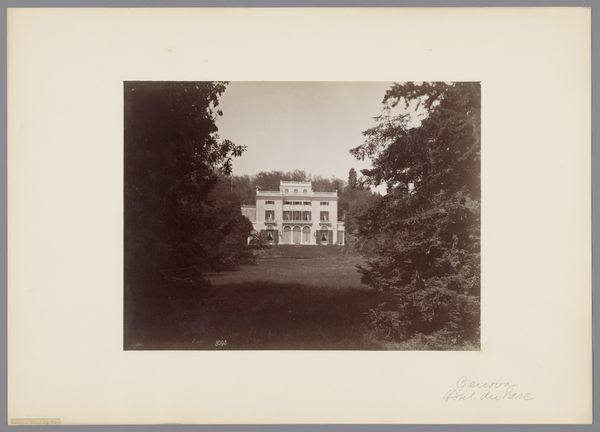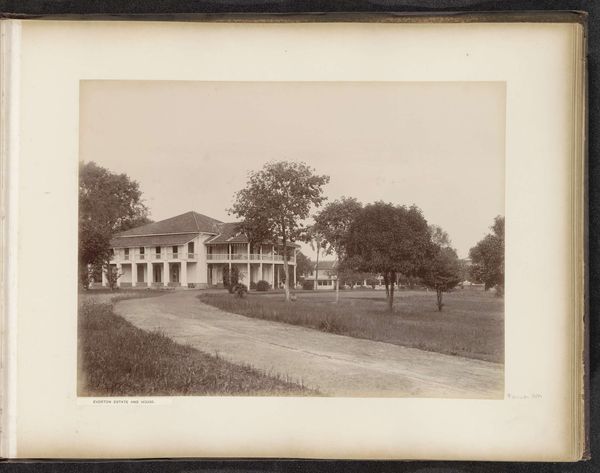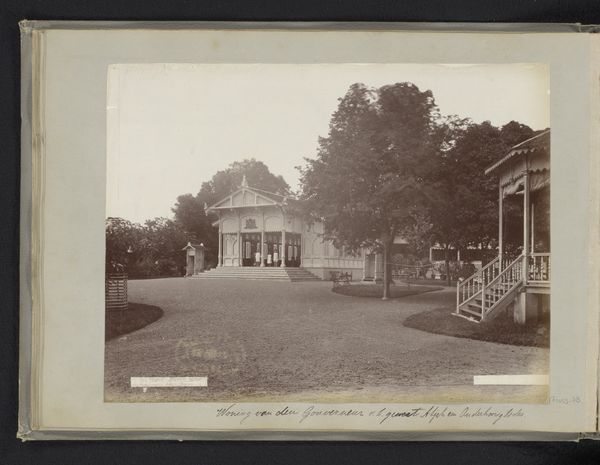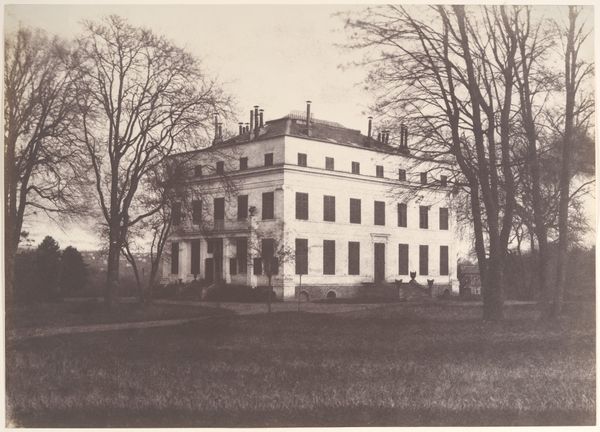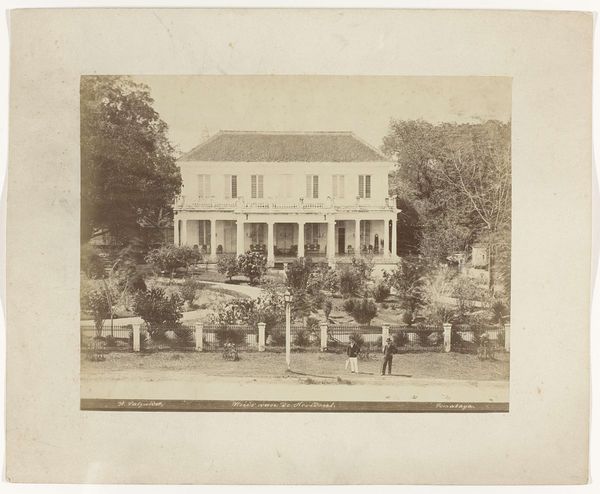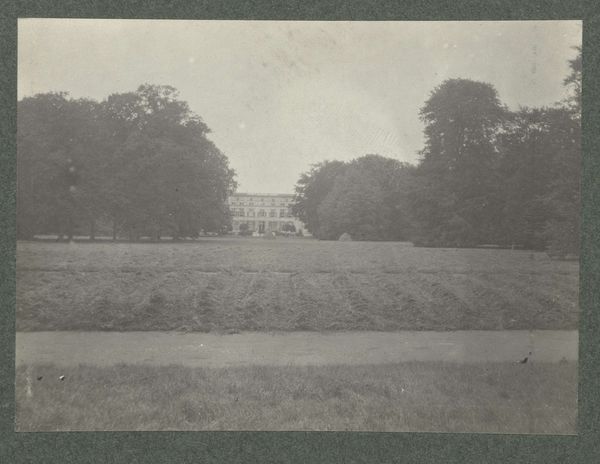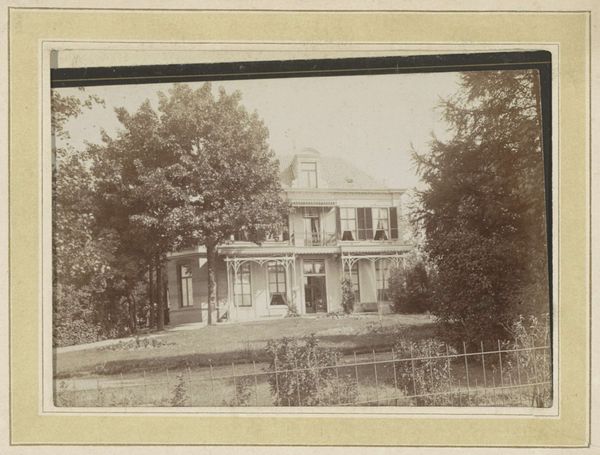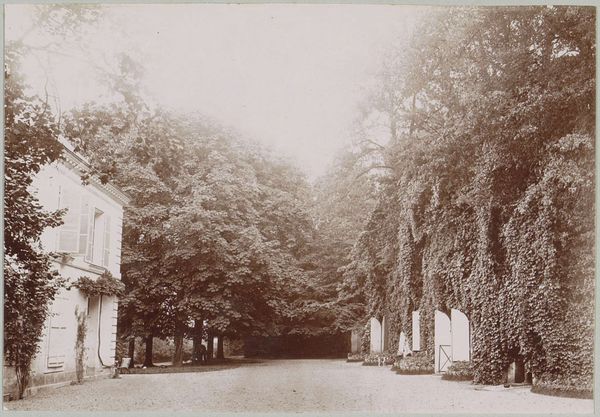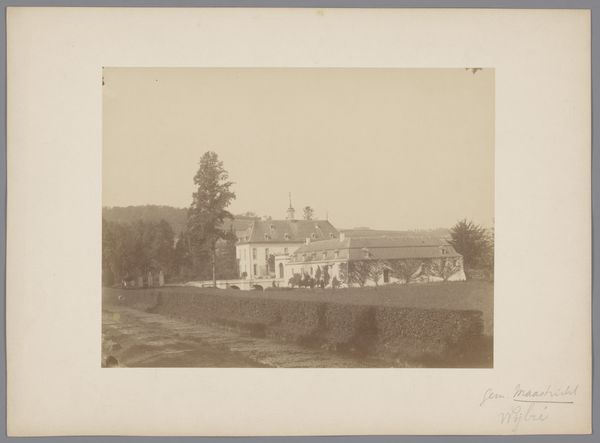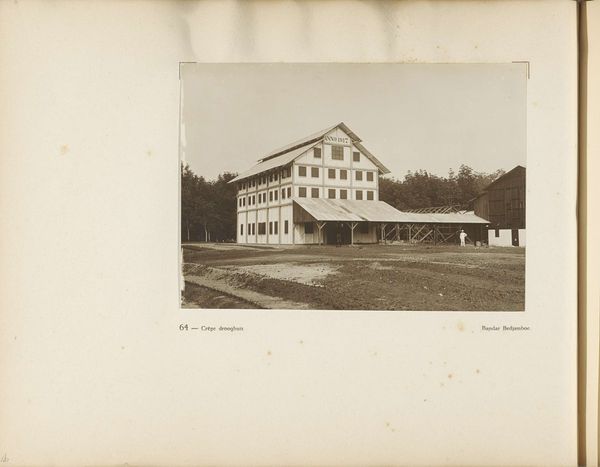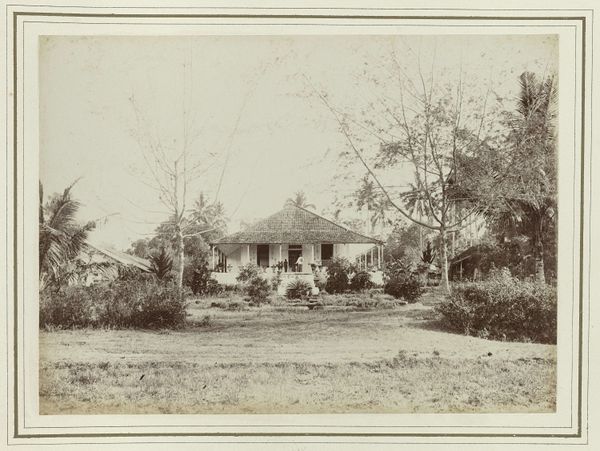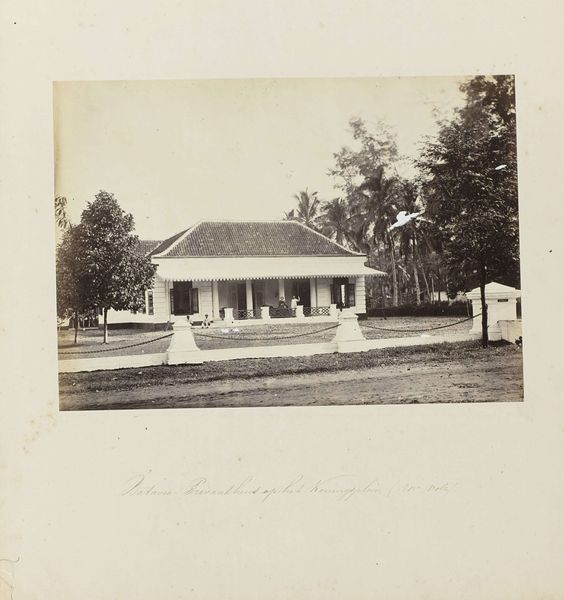
print, photography, albumen-print
# print
#
landscape
#
photography
#
albumen-print
Dimensions: height 81 mm, width 109 mm
Copyright: Rijks Museum: Open Domain
Curator: Welcome to this detailed albumen print by Hendrik Herman van den Berg, titled "Gezicht op de voormalige buitenplaats Duinenberg," predating 1894. Editor: It has such a hushed quality, doesn't it? The soft, almost faded tones give the whole scene a feeling of dignified quietude. Like a secret whispered through time. Curator: Absolutely. Albumen printing, popular then, involved coating paper with egg white to create a smooth surface for silver-based photography. The process lent a sepia tone, imbuing the image with that romantic, antique aesthetic we see here. One imagines the labour-intensive methods to reproduce this. Editor: Indeed, and consider the Duinenberg estate itself. Its architecture— those symmetrical facades, the prominent porch— speak of privilege and a particular social order. I can't help but wonder about the lived experiences of those who occupied such spaces, especially considering issues of class and access at the time. Curator: That's astute. The photograph normalizes an aristocratic domain. Yet, consider van den Berg’s conscious decision to situate the house amidst the landscape; framing this architectural construct. The sweeping road leading into the estate hints at access, however selective, and creates spatial dynamics between observer, estate and viewer. Editor: That deliberate framing, though, also creates a barrier, subtly reinforcing divisions between the landed gentry and those excluded from such lavish environments. This photo could, in its own way, function as a record, yet also, a reinforcement of social hierarchies. Curator: I think that your reading makes so much sense. Van den Berg carefully manipulates photographic tools to emphasize, and perhaps also subtly scrutinize the role and the context of labor. The choice of material and process would certainly inform what’s captured but also, who captures it. Editor: Reflecting on this albumen print reminds me that even seemingly passive landscape images are steeped in social and political implications. It prompts us to question the narratives we inherit. Curator: For me, this piece speaks volumes about the historical interplay of material processes and social strata and photographic innovation, one where access, vision and means converge in unexpected and revealing ways.
Comments
No comments
Be the first to comment and join the conversation on the ultimate creative platform.
